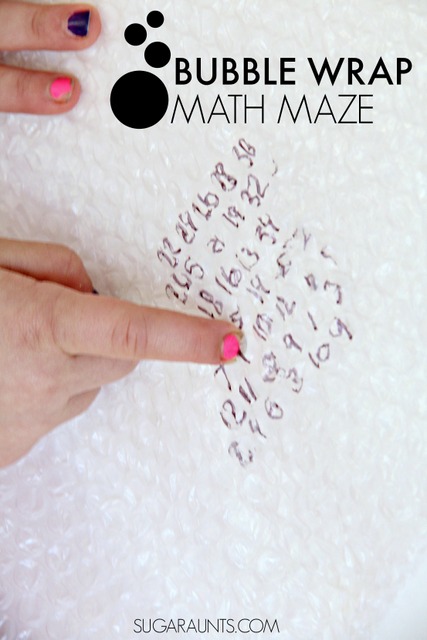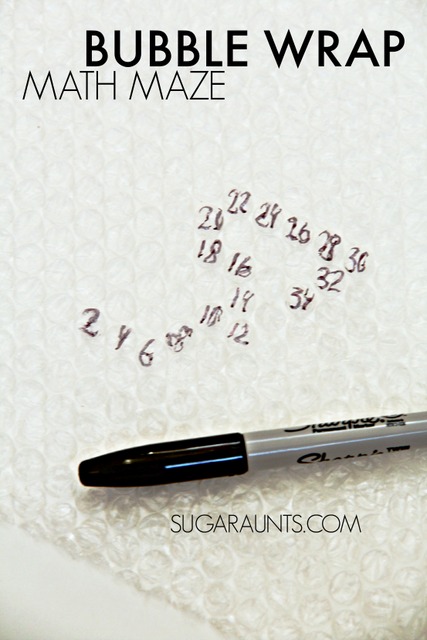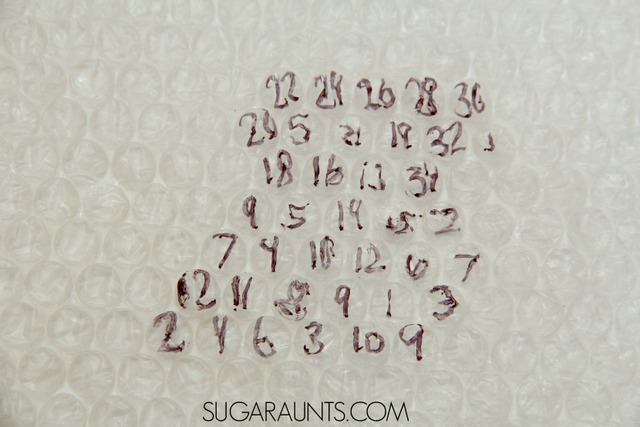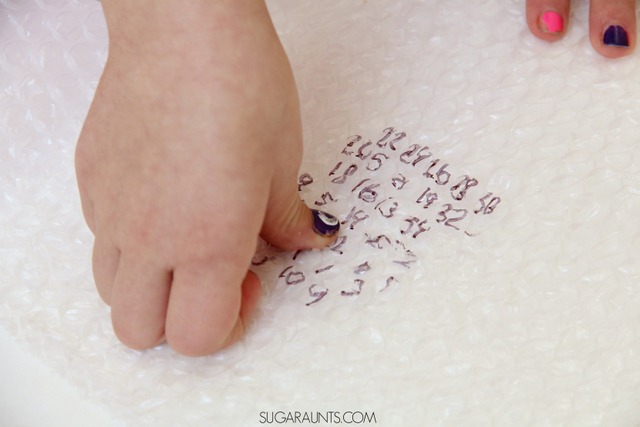
Counting On Math Activity:
permanent marker
to write even numbers on the bubbles, starting with number “2”. I wrote the numbers in a weaving maze so that it would take a bit of visual scanning to locate the appropriate number as my daughter counted on from 2.
The word on the therapy street is that Bubble Wrap is not going to be made in the near coming future, in order to provide a more environmentally conscious shipping product. The occupational therapists I know will be stocking up now for it’s fine motor workout awesomeness! That’s all for the inside scoop on bubble wrap for now.

What is Counting On and Counting Back in First Grade Math?

Visual Scanning Activity

Seek and find games such as “I Spy”. Or create your own real toy “I Spy” game.
Roll a ping pong ball across a table from person to person. Watch it with your eyes, while keeping your head still!
Trace pictures on a light box.
Flash light games.
Sensory seek and find.
This post is part of our month-long series: Learning with Free Materials series, where we share ideas to learn at home using free (or almost free) materials. It’s part of the 31 Days of Homeschooling Tips as we blog along with other bloggers with learning at home tips and tools.






